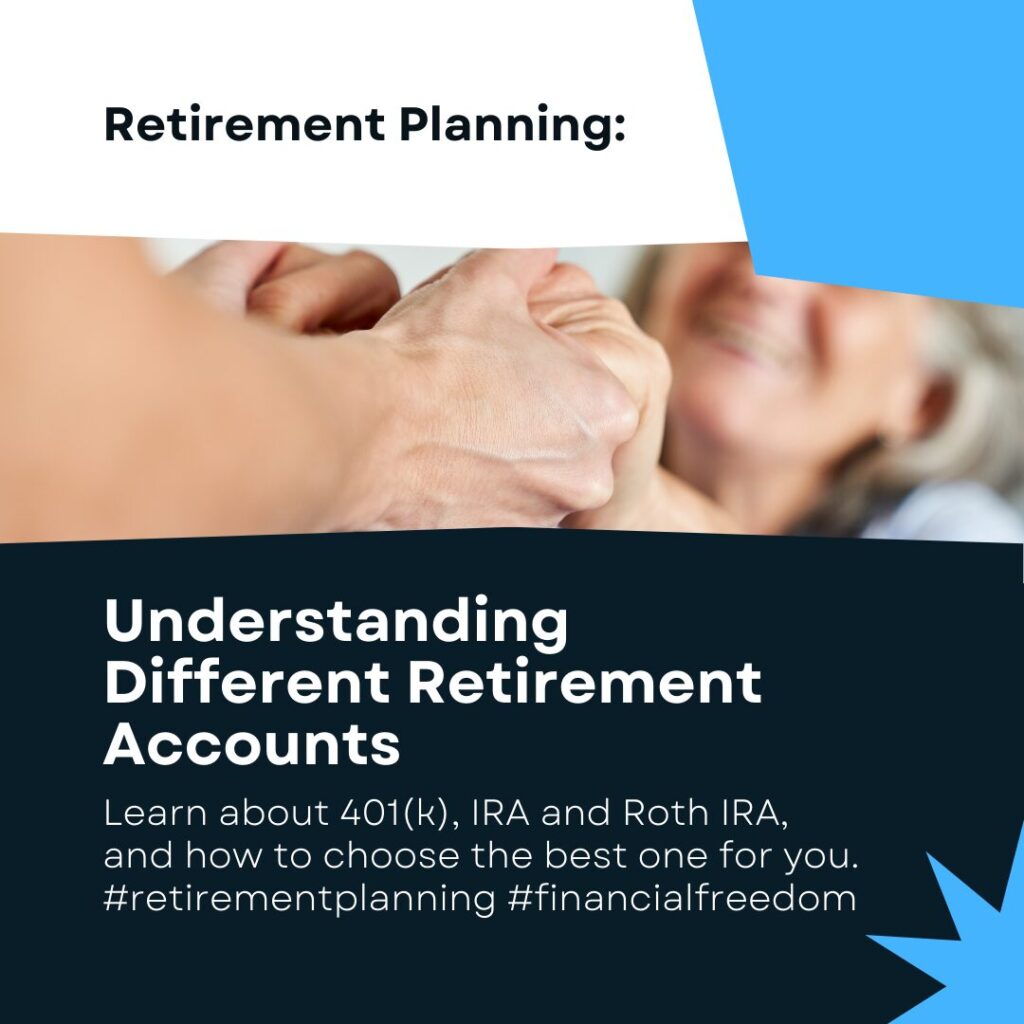Retirement planning is a crucial step towards securing your financial future. As you work hard throughout your life, ensuring that you can enjoy your golden years comfortably is essential. However, retirement planning can often be overwhelming and confusing, especially with the various factors and options to consider. That’s why we have created this ultimate essential guide for retirement planning. Whether you’re just starting or looking to optimize your existing plan, this guide will provide you with the knowledge and strategies you need to make informed decisions and achieve a successful retirement. So, let’s dive in and explore the world of retirement planning together.
Understanding Retirement Planning
Before we discuss the intricacies of retirement planning, it’s important to have a clear understanding of what it entails. Retirement planning involves setting goals, making financial decisions, and taking action to reach those goals. It encompasses various aspects, including retirement savings, retirement income, and investment strategies. The ultimate objective of retirement planning is to ensure financial security and stability during your retirement years, allowing you to maintain your desired standard of living and fulfill your retirement goals. By having a retirement plan in place, you can navigate your way through the complexities of retirement and confidently step into the next chapter of your life.
The Importance of Retirement Planning

Retirement planning is crucial for securing your financial future. It helps with financial planning, building a nest egg, and considering life expectancy. Retirement planning provides a roadmap for achieving retirement goals and ensures that you have enough money set aside to support yourself throughout your retirement years. By planning for retirement, you can create a comprehensive financial plan covering savings, investments, and insurance. You can build a nest egg by regularly contributing to retirement accounts like IRAs and 401(k)s. This provides financial security during retirement. With increasing life expectancy, it’s important to incorporate this into retirement planning to make informed decisions about savings and allocation of funds. Economic uncertainty can be navigated by diversifying the investment portfolio and being proactive in making adjustments when necessary.
Factors Affecting Retirement Planning
Retirement planning involves many factors that can impact how much money you need to save, the investment strategies you should use, and the overall success of your retirement plan. Here are some key things to consider. The amount of money required for a successful retirement varies depending on factors such as income, lifestyle, and goals. Market fluctuations can significantly affect your retirement savings. Interest rates also impact the growth of your retirement savings, while inflation erodes purchasing power over time. Healthcare expenses tend to increase as we age and should be considered when planning for retirement. By considering these factors, you can make informed decisions about your retirement plan and ensure financial security during your golden years.
How Much Should be Saved for Retirement?

Determining how much money you should save for retirement is a critical step towards achieving your financial goals. Several factors come into play to determine the ideal retirement savings target. By utilizing retirement calculators and considering various aspects of retirement planning, you can estimate the amount of money you need to save. The goal is to accumulate enough money to generate sufficient retirement income, allowing you to maintain your desired standard of living throughout your retirement years. Let’s explore how you can calculate your retirement savings and factors to consider in your calculations.
Calculating your Retirement Savings
Calculating retirement savings involves assessing financial goals, current financial situation, and factors that influence retirement income. Retirement calculators help estimate how much money to save. Key considerations when calculating include setting clear retirement goals and determining the desired lifestyle during retirement. Another consideration is aiming for a retirement income that is around 70-85% of your pre-retirement income. Assessing life insurance coverage can also provide financial security for loved ones in the event of your passing. By considering these factors, you can plan accordingly and make informed decisions for your future.
Factors to Consider in your Calculations
Calculating retirement savings involves taking into account various factors that can impact your financial plan. Here are some key factors to consider when calculating your retirement savings:
- Cost of Living: The cost of living can vary depending on where you plan to live during retirement. Consider the cost of housing, healthcare, utilities, and other day-to-day expenses in the locations you are considering. Factoring in the cost of living will help you estimate how much money you need to save for a comfortable retirement.
- Social Security: Social Security benefits can provide a source of income during retirement. Consider your eligibility and estimate how much income you can expect from Social Security. This income should be factored into your retirement savings calculations.
- Inflation: Inflation erodes the purchasing power of money over time. When calculating your retirement savings, it’s essential to account for inflation. Consider historical inflation rates and make projections for how prices may increase in the future.
- Healthcare Expenses: Healthcare expenses tend to increase with age. Consider the potential cost of healthcare during retirement, including insurance premiums, medical bills, and long-term care expenses. Planning for healthcare costs will help ensure that your retirement savings are sufficient.
- Other Sources of Income: Assess any other potential sources of income during retirement, such as rental properties, pensions, or part-time work. These additional income sources can supplement your retirement savings and reduce the amount of money you need to save.
- Life Expectancy: Consider your life expectancy when calculating retirement savings. Estimate how many years you may spend in retirement and plan your savings accordingly. Keep in mind that women, on average, tend to live longer than men.
By considering these factors, you can calculate a more accurate retirement savings target and make informed decisions about how much money you need to save for a successful retirement.
Different Types of Retirement Accounts

Retirement accounts offer tax advantages and serve as powerful tools to help individuals save for retirement. There are several different types of retirement accounts available, each with its own set of rules and benefits. Understanding these account types and their implications is crucial when planning for retirement. Let’s explore the different types of retirement accounts you may encounter during your retirement planning journey.
Traditional Individual Retirement Accounts (IRAs)
Traditional Individual Retirement Accounts (traditional IRAs) are savings accounts for retirement. Contributions made to traditional IRAs can often reduce your taxable income, giving you a potential tax deduction. Money in traditional IRAs grows tax-free until withdrawal during retirement. It’s a good idea to talk to a financial advisor for guidance on how much money to contribute and investment strategies within the account. Traditional IRAs offer a tax-advantaged way to save for retirement, providing potential tax deductions and tax-deferred growth within the account.
Roth Individual Retirement Account (IRA)
Roth IRAs are retirement accounts that give individuals tax-free growth and tax-free withdrawals in retirement. Here’s what you need to know:
- Tax-Free Growth: Roth IRAs grow tax-free since contributions and earnings are not taxed once inside the account.
- Income Limits: Roth IRAs have income limits that determine eligibility for contributions. Check if you qualify before contributing.
- Withdrawal Rules: Roth IRAs don’t require minimum distributions and offer flexibility with withdrawals, which can provide additional financial planning options during your retirement years.
In summary, Roth IRAs offer tax benefits, flexibility, and potential for tax-free growth.
Employer-Sponsored Retirement Plans
Many individuals use employer-sponsored retirement plans, like 401(k)s, to save for retirement. Employer matches are a key benefit where an employer contributes free money based on an employee’s contributions. Pension plans also offer extra retirement income along with individual accounts. 401(k) plans defer tax on contributions and offer investment options tailored to employees’ needs. Vesting schedules determine how much of the employer’s contributions an employee keeps if leaving prematurely. Loan provisions allow borrowing from these savings but may affect retirement savings. To maximize retirement savings potential, employees should leverage employer-sponsored retirement plans and use additional contributions from their employers.
Key Steps for Successful Retirement Planning

Retirement planning is a lifelong journey, and there are key steps you can take to ensure a successful retirement. By following these steps, you can lay a solid foundation for a financially secure future. Let’s explore some of the key steps for successful retirement planning.
Begin Saving Early
Retirement planning requires starting to save money early. Compound interest is why this is important. Compound interest means the longer you save, the more interest you earn on your money over time – even from the interest itself. Young adults have an advantage in retirement planning because they can make higher contributions and enjoy potential market gains over a longer period of time. Beginning to save early also means that smaller amounts can be saved each year, rather than trying to catch up later in life. Plus, with a longer time horizon, young adults can afford to take on slightly more risk with their investments, potentially resulting in higher returns over time. By starting to save early, young adults can benefit from compound interest and make smaller contributions while allowing for riskier investments – all leading to a successful retirement plan.
Regular Contributions
Regular contributions are important for building retirement savings over time. Consistency is key, so making smaller regular contributions can help you stay on track towards your retirement goals. Employee contributions to retirement plans, such as 401(k)s, are deducted from your paycheck and make saving easy. Payroll deduction ensures that contributions are made automatically each pay period, removing temptation and encouraging saving. Employer matching contributions to retirement plans are essentially free money and greatly increase your savings. Regular consistent contributions, even small ones, can make a significant difference in your savings over time helping you achieve financial security during retirement.
Investment Choices
Planning for retirement requires careful investment choices which impact your savings growth. A balanced investment strategy is crucial for long-term financial security. Consider these key points when choosing investments:
- Stock Market: It can offer higher returns but carries risk. Understand the market, fluctuations, and its fit in your retirement plan.
- Mutual Funds: They diversify investments and offer professional management. They are convenient for retirement savings.
- Risk Tolerance: Determine your comfort level with volatility in your portfolio to align it with your retirement goals.
- Real Estate: It can provide additional income streams and diversification as an alternative investment.
- Less Volatile Options: Gradually shift towards less volatile options like bonds or cash equivalents as you near retirement for stability and income.
- Optimize your retirement savings by understanding investments, assessing risk tolerance, and diversifying portfolios with various asset classes to maximize growth potential.
Expert Strategies for Retirement Planning
Navigating retirement planning can be complex, which is why seeking expert advice is highly recommended. Certified financial planners specialize in retirement planning and can help guide you through the retirement planning process. Here are some expert strategies that can enhance your retirement planning:
Long-Term Investment Approach
When planning for retirement, taking a long-term approach is important. This means investing in index funds that track market indexes like the S&P 500. Index funds offer diversification and lower fees. A long-term approach also helps you weather short-term market fluctuations and benefit from overall market growth. Your retirement timeline affects your investment strategy, so it’s crucial to consider it. By using these strategies, you can optimize your savings and increase the likelihood of reaching your financial goals.
Diversification of Portfolio
Diversifying your investment portfolio is a sound strategy when it comes to retirement planning. Here’s why diversification is crucial:
- Asset Allocation: Diversification involves spreading your investments across different asset classes, such as stocks, bonds, real estate, and cash. This helps reduce risk by not putting all your eggs in one basket.
- Less Volatility: By diversifying your portfolio, you can potentially reduce volatility and create a more stable foundation for your retirement savings. A diversified portfolio may be less affected by market fluctuations, offering a smoother path to reaching your retirement goals.
- Real Estate: Consider including real estate in your investment portfolio for diversification purposes. Real estate investments can provide income, inflation protection, and less volatility compared to stock market investments.
- By implementing a well-diversified portfolio, carefully considering asset allocation, and including real estate, you can minimize risk, increase the potential for returns, and ensure a more robust retirement plan.
Mistakes to Avoid While Retirement Planning
While careful planning is crucial, it’s also vital to avoid common retirement planning mistakes that can derail your financial goals. Let’s explore some of the common pitfalls to steer clear of:
Neglecting to Start Early
One big mistake in retirement planning is not starting early. Starting early is important because it results in more savings due to compound growth. You should also plan for full retirement age to avoid financial issues. To ensure enough savings, have an emergency fund for unexpected expenses. By avoiding these mistakes, you can achieve a successful retirement.
Forgetting to Plan for Inflation
Planning for inflation is crucial when it comes to retirement. Failing to do so can lead to a shortage of funds as the cost of living increases every year. It erodes the purchasing power of money over time. By factoring in inflation rates, you can estimate how much money you’ll need to maintain a comfortable lifestyle throughout your retirement. Social Security benefits and some retirement plans also offer cost of living adjustments (COLAs) to account for inflation. By considering these adjustments, you can ensure that your income keeps pace with inflation, maintaining your standard of living. Plan for inflation, consider inflation rates, and assess cost of living adjustments to safeguard your retirement savings against rising prices and enjoy a comfortable retirement.
Conclusion
Retirement planning is crucial for ensuring financial security and a comfortable lifestyle in your golden years. By understanding the importance of retirement planning and considering factors such as your desired retirement age, expected expenses, and inflation, you can determine how much you need to save. Exploring different types of retirement accounts, such as Traditional and Roth IRAs, as well as employer-sponsored plans, will give you options for maximizing your savings. To succeed in retirement planning, start saving early, make regular contributions, and choose investments wisely. It’s also essential to adopt a long-term investment approach and diversify your portfolio. Avoid common mistakes like neglecting to start early or forgetting to account for inflation. Plan ahead and factor in the cost of living increases to ensure a secure and comfortable retirement.













